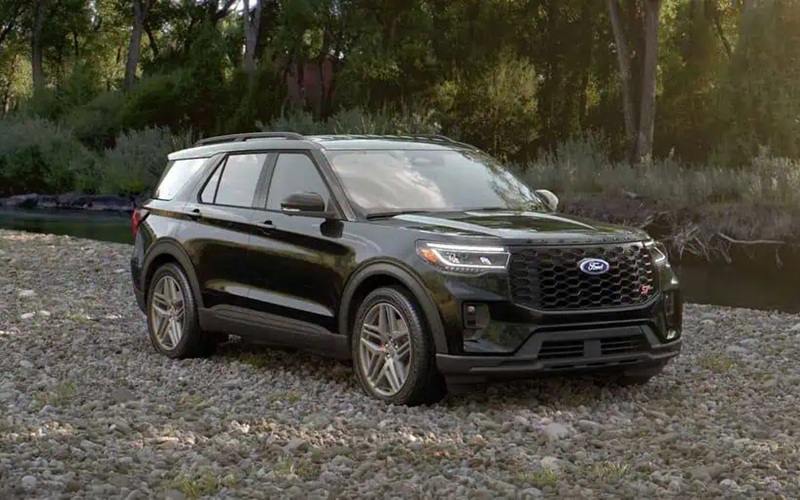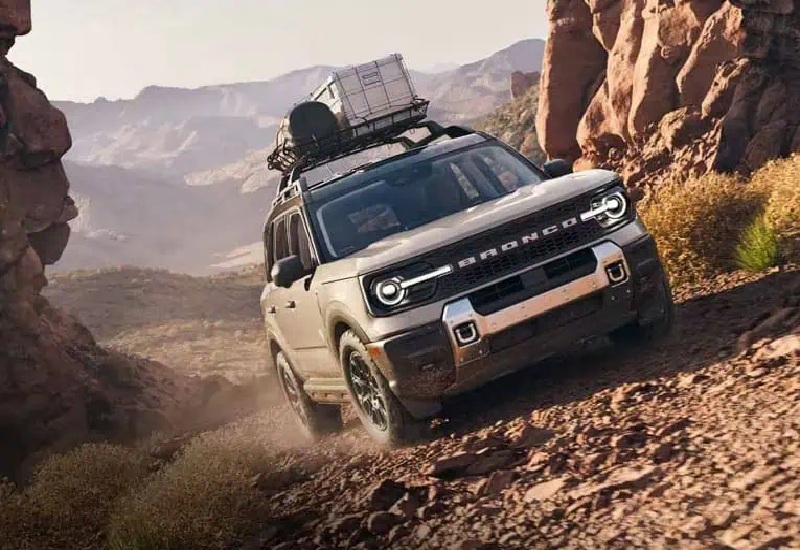The 2025 Ford Explorer: Camping and RV Adventures For You
The Ford Explorer continues its legacy as a versatile SUV designed for both everyday driving and outdoor adventures. This latest iteration brings thoughtful upgrades to enhance the camping and RV experience, cementing its position as a premier choice for outdoor enthusiasts. From integrated tent solutions to robust towing capabilities, the Explorer transforms from family transport […]
The Ford Explorer continues its legacy as a versatile SUV designed for both everyday driving and outdoor adventures. This latest iteration brings thoughtful upgrades to enhance the camping and RV experience, cementing its position as a premier choice for outdoor enthusiasts. From integrated tent solutions to robust towing capabilities, the Explorer transforms from family transport to wilderness basecamp with remarkable efficiency.

Rooftop Tent Compatibility
The Explorer features reinforced roof rails that accommodate rooftop tent systems. With a dynamic weight rating of 100 kg while in motion and a static weight capacity of 350 kg when parked, the Explorer confidently supports modern rooftop tent setups for multiple occupants. The rails feature standardized mounting points that are compatible with most aftermarket tent systems, eliminating the need for custom brackets or modifications.
Complementing these roof capabilities, the vehicle includes integrated tie-down points along the roof perimeter, providing secure anchoring options for awnings, light mounts, and other camping accessories. These thoughtful design elements transform the Explorer roof into a functional platform for elevated camping experiences.
Power Management System
A standout feature for campers is the enhanced power management system. All Explorer trim levels now feature an integrated 120-volt power outlet in the cargo area, with a 400-watt capacity, sufficient to power small appliances, charging stations, and camping equipment. The Platinum and King Ranch trims upgrade this to a 1,500-watt system that can handle more demanding applications like portable refrigerators, cooking equipment, and entertainment systems.
The system intelligently monitors power draw and vehicle battery levels, automatically adjusting output to prevent excessive battery drain. For extended stays, the Explorer can maintain power supply while running at idle, utilizing an efficiency management system that minimizes fuel consumption while delivering consistent electrical output.
Cargo Versatility for Camping Gear
The thoughtfully designed cargo area provides 515 litres of space behind the third row, expanding to 1,356 litres with the third row folded, and a cavernous 2,486 litres with both rear rows folded flat. The completely level load floor stretches to nearly 2 metres in length, accommodating sleeping pads for in-vehicle camping when desired.
Strategic storage compartments throughout the cargo area include waterproof bins ideal for wet gear and dedicated spaces for camping essentials. The hands-free, foot-activated liftgate provides convenient access even when arms are full of firewood or supplies. The Explorer interior storage systems include washable rubber floor mats and cargo area liners that can be removed for cleaning after muddy adventures.
Towing and RV Integration
Every Ford Explorer comes standard with a Class III trailer hitch receiver and integrated trailer wiring connector, enabling seamless connection to travel trailers and toy haulers. Towing capacity ranges from 1,588 kg with the base 2.3-litre EcoBoost engine to an impressive 2,540 kg with the available 3.0-litre EcoBoost V6 when properly equipped.
The Explorer Trailer Tow Package includes an integrated brake controller, advanced trailer sway control, and a specialized cooling system to maintain optimal operating temperatures during extended towing. The 360-degree camera system features a trailer hitch view with dynamic gridlines to simplify connecting to trailers without assistance.
For RV enthusiasts, the Explorer can also function as a “dinghy vehicle” behind larger motorhomes with an available four-wheel flat-towing capability on specific configurations. This versatility allows the Explorer to serve as both a primary tower and a towed exploration vehicle,, depending on your adventure needs.
Outdoor-Focused Interior Features
The interior is thoughtfully designed to facilitate a seamless transition between civilized driving and outdoor living. Washable ActiveX seating surfaces in the rugged Timberline and ST-Line trims resist moisture, mud, and stains from outdoor activities. The climate control system features a “Tent Mode” that enables programmed heating or cooling operation for up to 8 hours without the engine running continuously, ideal for maintaining comfort while sleeping in connected tent setups.
Storage pockets throughout the cabin feature rubber linings you can remove and rinse clean of dirt and debris. USB ports in all three rows ensure devices remain charged during extended trips, while the available wireless charging pad accommodates smartphones without cable clutter.
Things You Didn’t Know About the 2025 Ford Explorer Camping Capabilities
• The Explorer rear climate system can be programmed to function independently of the main cabin, allowing it to circulate fresh air into attached tent systems without wasting energy cooling or heating the entire vehicle.
• Hidden within the rear cargo area floor panel is a dedicated space designed to store the included emergency roadside kit, as well as additional camping essentials, keeping them accessible yet out of sight.
• The available dual-panel moonroof features a specialized “Night Sky” mode that reduces interior reflection for improved stargazing from inside the vehicle.
• When in Park, you can switch the Explorer ambient lighting system to red-spectrum illumination that preserves night vision for campers moving between the vehicle and their campsite.
• The navigation system includes an offline mapping feature that stores detailed topographic information and trail access points even in areas without cellular connectivity.
Questions and Answers About the 2025 Ford Explorer Tent and RV Features
Can I attach a tent directly to the Explorer?
- Yes, this SUV is compatible with various tailgate tents and awning systems that attach to the rear liftgate, creating a sheltered living space that extends from the vehicle. The cargo area can then function as sleeping quarters or sheltered storage.
What is the ground clearance of the Explorer for off-road camping sites?
- The standard trim offers 207 mm of ground clearance, while the Timberline trim increases this to 220 mm, providing additional capability for accessing remote campsites with rough terrain.
How does the Explorer battery system handle extended camping without hookups?
- It features an enhanced dual-battery system on upper trims that separates essential vehicle functions from accessory power, allowing campers to use electrical features for up to 48 hours without risking the primary starting battery.
Can the Explorer accommodate roof-mounted gear along with a rooftop tent?
- Yes, the roof rail system is designed with split functionality, allowing a rooftop tent to occupy one side while the opposite rail supports kayaks, bikes, or cargo carriers up to the maximum weight rating.
What fuel tank capacity does the Explorer offer for remote camping trips?
- This SUV features a 70-litre fuel tank across all trims, providing approximately 700-840 km of highway range depending on engine and drivetrain configuration.
Are there water management features for camping activities?
- The Explorer includes a water-resistant storage compartment in the rear cargo area, and the Timberline trim features specialized drainage channels in the cargo area that allow wet gear to dry without damaging interior components.
Can I flat-tow the Explorer behind a motorhome?
- Select configurations can be flat-towed behind larger RVs when equipped with the available dinghy towing package, which includes necessary wiring and circulation pumps for transmission protection.
Does the Explorer have integrated air compressor capabilities for inflating air mattresses?
- The Timberline and Platinum trims offer an available built-in air compressor system with connection points in the cargo area, capable of inflating air mattresses, camping equipment, and bicycle tires.
How does the terrain management system help when accessing campsites?
- The Explorer Terrain Management System includes seven selectable drive modes, including Trail, Deep Snow/Sand, and Slippery, optimizing vehicle performance for various campsite access conditions by adjusting throttle response, transmission shifts, and traction control systems.
Can the Explorer infotainment system help with campsite planning?
- Yes, the SYNC system includes specialized outdoor activity planning features, including elevation profiles for trails, sunset/sunrise times for your location, and downloadable maps of remote areas without cellular coverage.


